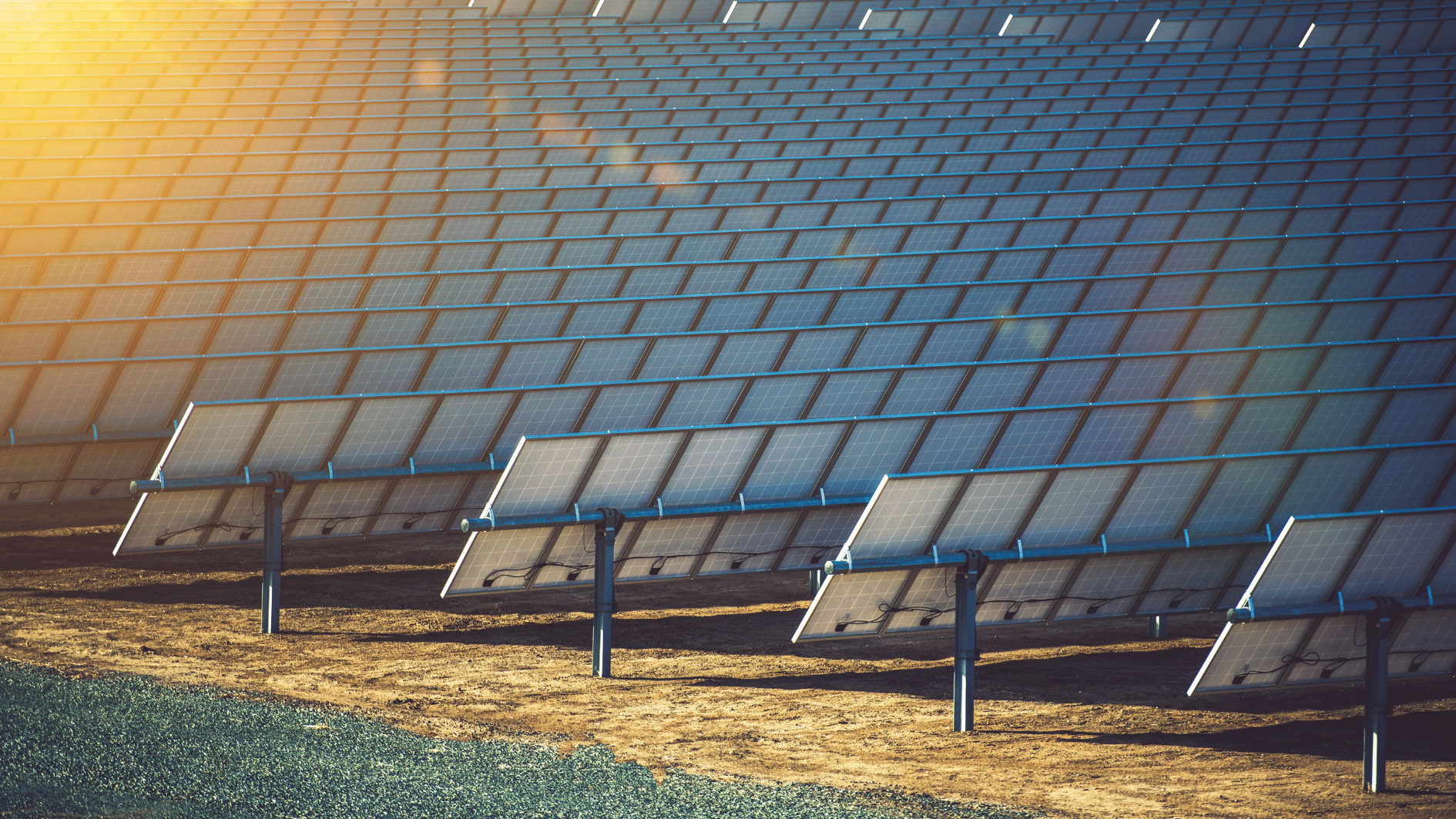Image source: Canva.com
Concentrated Solar Power (CSP) is a renewable energy technology that harnesses the sun’s heat to generate electricity on a large scale. Unlike traditional photovoltaic (PV) solar panels, which convert sunlight directly into electricity, CSP systems use mirrors or lenses to concentrate sunlight onto a small area, producing intense heat. This thermal energy is then used to drive a conventional power plant – often involving steam turbines or engines – to generate electricity.
In this article, we’ll dive into the mechanics of CSP, its benefits and challenges, and how it differs from other solar technologies like PV systems.
How Does Concentrated Solar Power (CSP) Work?
CSP systems use mirrors or reflective surfaces to focus sunlight onto a single point or a linear focal line, where it’s absorbed and converted into heat. This thermal energy can then be used in various ways, typically through the following steps:
Concentration of Sunlight
Mirrors or lenses are arranged in a way that they track the sun’s movement, focusing sunlight onto a central receiver.
Heat Transfer
The receiver captures and converts concentrated sunlight into high-temperature heat. Common heat transfer fluids include water, molten salts, or synthetic oils.
Power Generation
The heat is used to produce steam, which drives a turbine connected to a generator, creating electricity. Alternatively, it can drive other heat engines like Stirling engines.
Thermal Energy Storage
CSP systems often include thermal energy storage, allowing them to produce electricity even after the sun sets. Molten salts are a popular storage medium because they can retain heat efficiently for extended periods.
This unique ability to generate power on demand sets CSP apart from traditional solar PV systems, which rely on direct sunlight to generate electricity.
Types of CSP Technologies
There are several types of CSP technologies, each with distinct designs and applications:
Parabolic Trough Systems
- Use curved, U-shaped mirrors to concentrate sunlight onto a linear receiver tube running along the mirror’s focal line.
- The heated fluid in the tube generates steam to power a turbine.
- Parabolic troughs are among the most widely deployed CSP systems worldwide.
Power Tower Systems
- Use a field of flat, sun-tracking mirrors (heliostats) to focus sunlight onto a receiver at the top of a central tower.
- The tower’s receiver converts sunlight into heat, which is used to generate steam and drive a turbine.
- These systems can achieve very high temperatures, making them suitable for efficient thermal energy storage.
Dish/Engine Systems
- Utilize parabolic dishes to concentrate sunlight onto a single point, where it’s absorbed by a receiver.
- The heat drives a Stirling engine, generating mechanical power, which is then converted into electricity.
- This technology is suitable for small-scale applications and decentralized power generation.
Linear Fresnel Systems
- Use a series of flat or slightly curved mirrors to focus sunlight onto a receiver positioned above them.
- They are similar to parabolic trough systems but tend to be more compact and cost-effective, making them ideal for large-scale projects.
Advantages of Concentrated Solar Power
CSP offers several unique benefits that make it an attractive option for utility-scale renewable energy generation:
- Energy storage capability: CSP systems can store thermal energy, allowing for electricity production even when the sun isn’t shining. This storage capability makes CSP a reliable source of dispatchable power, providing energy on demand and helping stabilize the grid.
- Scalability: CSP plants are typically large-scale projects, making them ideal for regions with high solar insolation and vast land availability. They can generate hundreds of megawatts, contributing significantly to a country’s energy mix.
- Potential for hybridization: CSP systems can be hybridized with other technologies, such as natural gas or biomass, to provide consistent power generation. This flexibility enhances their reliability and efficiency.
- Environmental impact: CSP generates zero emissions during operation and uses the sun’s heat as its primary resource, making it an environmentally friendly alternative to fossil fuel power plants.
Challenges Facing CSP Development
Despite its advantages, CSP faces several challenges that have slowed its adoption compared to other renewable technologies like wind and solar PV:
- High costs: The construction and maintenance of CSP plants are more expensive than traditional solar PV installations. The need for advanced materials, mirrors, and heat transfer systems contributes to higher upfront costs.
- Land and water requirements: CSP plants require large tracts of land with direct sunlight and minimal cloud cover, making them suitable primarily for desert regions. Additionally, they often need significant amounts of water for cooling, which can be an issue in arid locations.
- Complexity: CSP systems involve more intricate engineering and operational processes compared to PV systems, leading to higher operational and maintenance demands.
- Geographic limitations: CSP’s efficiency depends heavily on direct sunlight, so it’s most effective in regions like the southwestern United States, the Middle East, and North Africa. This geographical limitation means CSP is less feasible in cloudy or temperate areas.
CSP vs. Solar PV: What’s the Difference?
While both CSP and PV technologies harness the power of the sun, they do so in very different ways:
Mechanism
PV panels convert sunlight directly into electricity using semiconductor materials, while CSP captures the sun’s heat to drive mechanical systems.
CSP can easily integrate thermal storage systems, providing power after sunset. Solar PV requires battery storage, which can be expensive.
Energy Storage
Efficiency and Scale
CSP is typically used for large-scale power generation and is more efficient at higher temperatures, whereas PV systems are versatile, suitable for both residential and utility-scale installations.
Understanding these differences is key when considering which solar technology to implement based on the region, scale, and energy needs.
The Future of Concentrated Solar Power
As the global demand for clean energy grows, CSP technology is evolving to become more cost-effective and efficient. Innovations like higher-temperature materials, improved thermal storage solutions, and hybrid systems are making CSP a competitive option for large-scale energy projects.
In regions with high direct sunlight, CSP could play a crucial role in transitioning to a renewable energy future, providing reliable and dispatchable power that complements other renewable sources like wind and PV solar.
With continued advancements, CSP has the potential to become a key player in the global energy landscape, helping reduce greenhouse gas emissions and contribute to sustainable energy goals.





